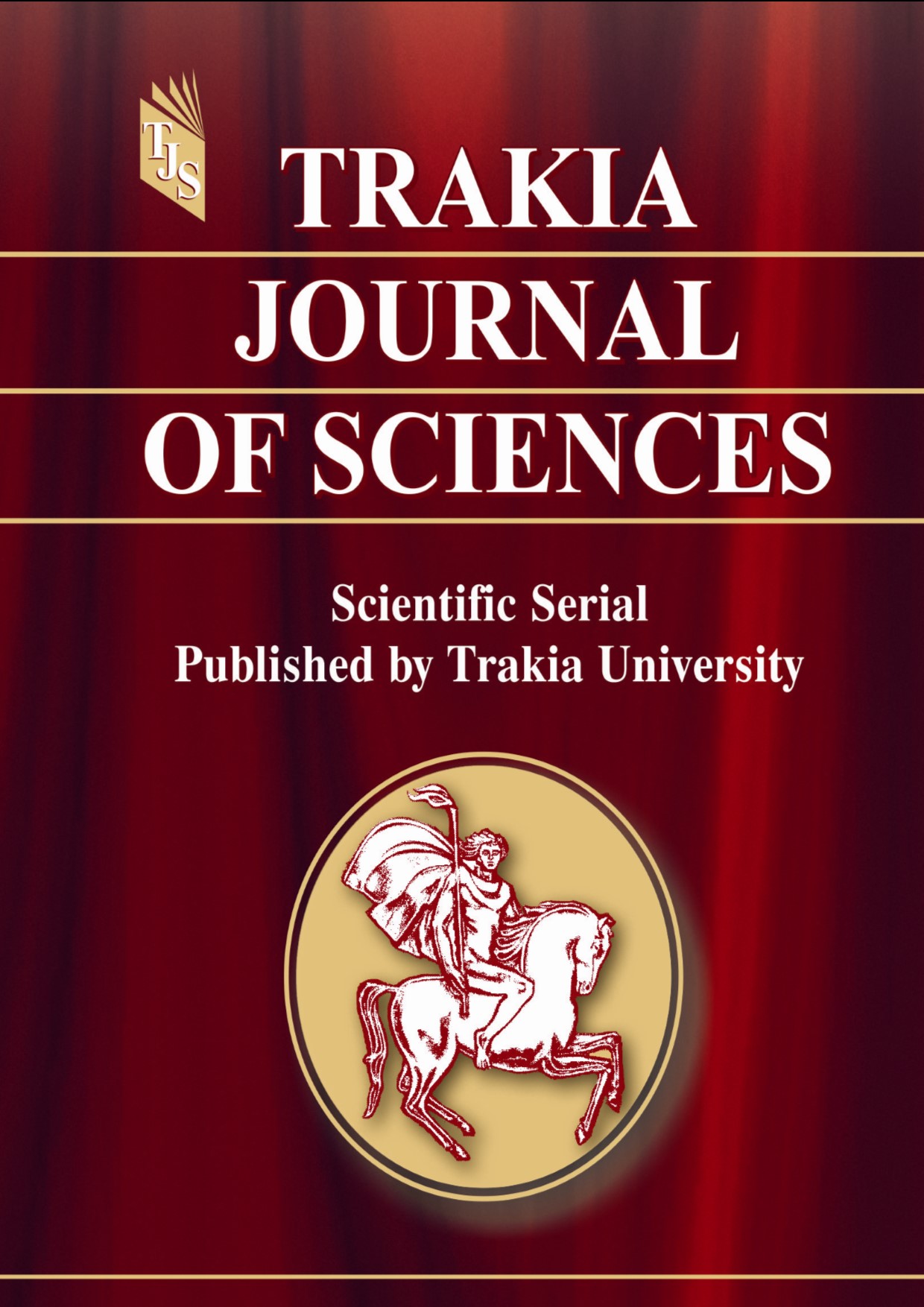A TECHNICAL NOTE ON SAFE DEFINITIVE EXTERNALIZED LOCKED PLATING FOR BIOLOGICAL FRACTURE HEALING IN COMPLEX TIBIAL FRACTURES
DOI:
https://doi.org/10.15547/tjs.2024.01.009Keywords:
Tibia, open fractures, soft tissue injury, externalized supercutaneous platingAbstract
Purpose. This technical note describes a minimally invasive surgical technique for early appropriate care in patients with high-energy, multifragmentary tibial fractures by means of safe one-stage external stabilization with angle-stabled plates. The purpose of the presented prospective case series study was, to explore the clinical feasibility and research the biomechanical parameters and of externalized locked plating and, to test the functional result and clinical outcomes following the novel technique for definitive surgical treatment for complex - meta-diaphyseal multifragmentary, proximal (with simple intra-articular) and distal (multifragmentary metaphyseal), fractures of the shin bone.
Methods: Thirty-three patients participated in the prospective feasibility study, carried out from August 2012 to September 2023. The precise inclusion criteria were: sustained high-energy tibial trauma and severe soft tissue injury, with complex proximal and distal meta-diaphyseal tibial fractures, stabilized with externalized locked plating. Results: Eighteen of the patients from the prospective cohort included in the study were followed up for an average of 21.4 ± 12.3 months, union rate of 94,7%. All fractures healed by means of secondary bone union and with minor complications. We reached a significantly shorter mean union time was 21.1 ± 4.6 weeks, for patients with proximal extra- versus intra-articular meta-diaphyseal tibial fractures, p = 0.04. According to HSS and AOFAS scores, good and excellent functional results in knee and ankle joints’ range of motion were accomplished among 90 percents of the patients. However, there were no registered implant de-bricolage, non-union or severe deep infection. We had two patients with re-fracture between the fourth and sixth week after external plate removal, who underwent secondary surgical procedure for successful bone healing. Several screws were loosened in nine patients from the cohort, with no negative effect on the bone union process.
Conclusions. The currently reported technique for one–stage supercutaneous fracture stabilization by means of externalized locked plating is a novel surgical procedure for a safe external fracture fixation with LISS-DF plate. The definitive externalized fracture plating is a viable surgical solution for natural bone union in complex – multifragmentary meta-diaphyseal tibial fractures with injured soft tissue envelope.
References
Catagni, M.A.; Ottaviani, G.; Maggioni, M.Treatment strategies for complex fractures of the tibial plateau with external circular fixation and limited internal fixation. J.Trauma 2007, 63, 1043–1053. [CrossRef] [PubMed]
Gosling, T.; Schandelmaier, P.; Muller, M.; Hankemeier, S.;Wagner, M.; Krettek, C. Single lateral locked screw plating of bicondylar tibial plateau fractures. Clin. Orthop. Relat. Res. 2005, 439, 207–214. [CrossRef] [PubMed]
Bove, F.; Sala, F.; Capitani, P.; Thabet, A.M.; Scita, V.; Spagnolo, R.Treatment of fractures of the tibial plateau (Schatzker VI) with external fixators versus plate osteosynthesis. Injury 2018, 49 (Suppl. 3), S12–S18. [CrossRef] [PubMed]
Yang, S.W.; Tzeng, H.M.; Chou, Y.J.; Teng, H.P.; Liu, H.H.;Wong, C.Y.Treatment of distal tibial metaphyseal fractures:Plating versus shortened intramedullary nailing. Injury 2006, 37, 531–535. [CrossRef] [PubMed]
Zelle, B.A.; Bhandari, M.; Espiritu, M.; Koval, K.J.; Zlowodzki, M.Treatment of distal tibia fractures without articular involvement: A systematic review of 1125 fractures. J. Orthop. Trauma 2006, 20, 76–79. [CrossRef]
Luo, P.; Xu, D.;Wu, J.; Chen, Y.H.Locked plating as an external fixator in treating tibial fractures: A PRISMA-compliant systematic review. Medicine (Baltimore) 2017, 96, e9083. [CrossRef]
Lau, T.W.; Leung, F.; Chan, C.F.; Chow, S.P.Wound complication of minimally invasive plate osteosynthesis in distal tibia fractures. Int. Orthop. 2008, 32, 697–703. [CrossRef]
Scolaro, J.A.; Broghammer, F.H.; Donegan, D.J.Intramedullary Tibial Nail Fixation of Simple Intraarticular Distal Tibia Fractures. J. Orthop.Trauma 2016, 30 (Suppl. 4), S12–S16. [CrossRef]
Kalinterakis, G.; Koutras, A.; Syllaios, A.; Michalakeas, N.; Lytras, D.; Tsilikis, I.The evolution and impact of the“damage control orthopedics”paradigm in combat surgery: A review. Eur. J. Orthop. Surg. Traumatol. 2019, 29, 501–508. [CrossRef]
Hasenboehler, E.; Rikli, D.; Babst, R.Locking compression plate with minimally invasive plate osteosynthesis in diaphyseal and distal tibial fracture:A retrospective study of 32 patients. Injury 2007, 38, 365–370. [CrossRef]
Janssen, K.W.; Biert, J.; van Kampen, A.Treatment of distal tibial fractures: Plate versus nail:A retrospective outcome analysis of matched pairs of patients. Int. Orthop. 2007, 31, 709–714. [CrossRef] [PubMed]
Li, B.; Yang, Y.; Jiang, L.S.Plate fixation versus intramedullary nailing for displaced extra-articular distal tibia fractures: A system review. Eur. J. Orthop. Surg. Traumatol. 2015, 25, 53–63. [CrossRef] [PubMed]
Marsh, J.L.; Bonar, S.; Nepola, J.V.; Decoster, T.A.; Hurwitz, S.R.Use of an articulated external fixator for fractures of the tibial plafond. J. Bone Joint. Surg. Am. 1995, 77, 1498–1509. [CrossRef] [PubMed]
Nork, S.E.; Schwartz, A.K.; Agel, J.; Holt, S.K.; Schrick, J.L.;Winquist, R.A.Intramedullary nailing of distal metaphyseal tibial fractures. J. Bone Joint. Surg. Am. 2005, 87, 1213–1221. [CrossRef] [PubMed]
Sitnik, A.A.; Beletsky, A.V.Minimally invasive percutaneous plate fixation of tibia fractures:Results in 80 patients. Clin. Orthop. Relat. Res. 2013, 471, 2783–2789. [CrossRef] [PubMed]
Fang, X.; Jiang, L.; Wang, Y.; Zhao, L.Treatment of Gustilo grade III tibial fractures with unreamed intramedullary nailing versus external fixator: A meta-analysis. Med. Sci. Monit. 2012, 18, Ra49-56. [CrossRef]
Kerkhoffs, G.M.; Kuipers, M.M.; Marti, R.K.; Van derWerken, C.External fixation with standard AO-plates: Technique, indications, and results in 31 cases. J. Orthop.Trauma 2003, 17, 61–64. [CrossRef]
Kloen, P. Supercutaneous plating:Use of a locking compression plate as an external fixator. J. Orthop.Trauma 2009, 23, 72–75. [CrossRef]
Marti, R.K.;van der Werken, C. The AO-plate for external fixation in 12 cases. Acta Orthop. Scand. 1991, 62, 60–62. [CrossRef]
Qiu, X.S.; Yuan, H.; Zheng, X.; Wang, J.F.; Xiong, J.; Chen, Y.X.Locking plate as a definitive external fixator for treating tibial fractures with compromised soft tissue envelop. Arch. Orthop. Trauma Surg. 2014, 134, 383–388. [CrossRef]
Ma, C.H.; Wu, C.H.; Jiang, J.R.; Tu, Y.K.; Lin, T.S.Metaphyseal locking plate as an external fixator for open tibial fracture: Clinical outcomes and biomechanical assessment. Injury 2017, 48, 501–505. [CrossRef] [PubMed]
Ma, C.H.; Tu, Y.K.; Yeh, J.H.; Yang, S.C.; Wu, C.H.Using external and internal locking plates in a two-stage protocol for treatment of segmental tibial fractures. J.Trauma 2011, 71, 614–619. [CrossRef]
Zhang, J.; Ebraheim, N.; Li, M.; He, X.; Liu, J.; Zhu, L.; Yu, Y.External fixation using femoral less invasive stabilization system plate in tibial proximal metaphyseal fracture. Clin. Orthop. Surg. 2015, 7, 8–14. [CrossRef] [PubMed]
Zhang, J.W.; Ebraheim, N.A.; Li, M.; He, X.F.; Schwind, J.; Zhu, L.M.; Yu, Y.H. Distal tibial fracture:An ideal indication for external fixation using locking plate. Chin. J. Traumatol. 2016, 19, 104–108. [CrossRef]
Zhou, Y.;Wang, Y.; Liu, L.; Zhou, Z.; Cao, X.Locking compression plate as an external fixator in the treatment of closed distal tibial fractures. Int. Orthop. 2015, 39, 2227–2237. [CrossRef] [PubMed]
Apivatthakakul, T.; Sananpanich, K.The locking compression plate as an external fixator for bone transport in the treatment of a large distal tibial defect: A case report. Injury 2007, 38, 1318–1325. [CrossRef]
Ebraheim, N.A.; Carroll, T.; Hanna, M.; Zhang, J.; Liu, J.Staged treatment of proximal tibial fracture using external locking compression plate. Orthop. Surg. 2014, 6, 154–157. [CrossRef] [PubMed]
Khatod, M.; Botte, M.J.; Hoyt, D.B.; Meyer, R.S.; Smith, J.M.; Akeson,W.H.Outcomes in open tibia fractures:Relationship between delay in treatment and infection. J.Trauma 2003, 55, 949–954. [CrossRef]
Hidayat, L.; Triangga, A.F.R.; Cein, C.R.; Irfantian, A.; Rahayu, B.F.P.; Resubun, A.P.; Magetsari, R.Low profile external fixation using locking compression plate as treatment option for management of soft tissue problem in open tibia fracture grade IIIA: A case series. Int. J. Surg. Case Rep. 2022, 93, 106882. [CrossRef]
Ma, C.H.; Wu, C.H.; Tu, Y.K.; Lin, T.S.Metaphyseal locking plate as a definitive external fixator for treating open tibial fractures–clinical outcome and a finite element study. Injury 2013, 44, 1097–1101. [CrossRef]
Zhang, J.; Ebraheim, N.A.; Li, M.; He, X.; Liu, J.; Zhu, L.; Yu, Y.; Siddiqui, S.External Fixation Using a Locking Plate: A Reliable Way in Treating Distal Tibial Fractures. J. Orthop. Trauma 2015, 29, e454–e458. [CrossRef] [PubMed]
Tulner, S.A.; Strackee, S.D.; Kloen, P.Metaphyseal locking compression plate as an external fixator for the distal tibia. Int. Orthop. 2012, 36, 1923–1927. [CrossRef] [PubMed]
Kanchanomai, C.; Phiphobmongkol, V.Biomechanical evaluation of fractured tibia externally fixed with an LCP. J. Appl. Biomech. 2012, 28, 587–592. [CrossRef] [PubMed]
Liu, W.; Yang, L.; Kong, X.; An, L.; Hong, G.; Guo, Z.; Zang, L.Stiffness of the locking compression plate as an external fixator for treating distal tibial fractures: A biomechanics study. BMC Musculoskelet. Disord. 2017, 18, 26. [CrossRef]
Zhang, J.; Ebraheim, N.; Li, M.; He, X.; Schwind, J.; Liu, J.; Zhu, L.External fixation using locking plate in distal tibial fracture:A finite element analysis. Eur. J. Orthop. Surg. Traumatol. 2015, 25, 1099–1104. [CrossRef]
Blaževi´c, D.; Kodvanj, J.; Adamovi´c, P.; Vidovi´c, D.; Trobonjaˇca, Z.; Sabali´c, S.Comparison between external locking plate fixation and conventional external fixation for extraarticular proximal tibial fractures: A finite element analysis. J. Orthop. Surg. Res. 2022, 17, 16. [CrossRef]
Ang, B.F.H.; Chen, J.Y.; Yew, A.K.S.; Chua, S.K.; Chou, S.M.; Chia, S.L.; Koh, J.S.B.; Howe, T.S.Externalised locking compression plate as an alternative to the unilateral external fixator: A biomechanical comparative study of axial and torsional stiffness. Bone Joint. Res. 2017, 6, 216–223. [CrossRef] [PubMed]
Eckardt, H.; Morgenstern, M.; Cadosch, D.; Stoffel, K.Flouroscopic Control of Tibial Torsion After Intramedullary Nailing: ATechnical Trick. J. Orthop.Trauma 2021, 35, e507–e510. [CrossRef]
Dragomir-Daescu, D.;Op Den Buijs, J.; McEligot, S.; Dai, Y.; Entwistle, R.C.; Salas, C.; Melton, L.J., 3rd; Bennet, K.E.; Khosla, S.; Amin, S.Robust QCT/FEA models of proximal femur stiffness and fracture load during a sideways fall on the hip. Ann. Biomed. Eng. 2011, 39, 742–755. [CrossRef] [PubMed]
Perren, S.M.Physical and biological aspects of fracture healing with special reference to internal fixation. Clin. Orthop. Relat. Res. 1979, 138, 175–196.
Perren, S.M.Evolution of the internal fixation of long bone fractures.The scientific basis of biological internal fixation:Choosing a new balance between stability and biology. J. Bone Joint. Surg. Br. 2002, 84, 1093–1110. [CrossRef] [PubMed]
Possley, D.R.; Burns, T.C.; Stinner, D.J.; Murray, C.K.; Wenke, J.C.; Hsu, J.R.Temporary external fixation is safe in a combat environment. J.Trauma 2010, 69 (Suppl. 1), S135–S139. [CrossRef]
Moss, D.P.; Tejwani, N.C.Biomechanics of external fixation: A review of the literature. Bull. NYU Hosp. Jt. Dis. 2007, 65, 294–299.
Makelov, B.; Mischler, D.; Varga, P.; Apivatthakakul, T.; Fletcher, J.W.A.; Veselinov, D.; Berk, T.; Raykov, D.; Gueorguiev, B. Single-Stage Externalized Locked Plating for Treatment of Unstable Meta-Diaphyseal Tibial Fractures. J. Clin. Med. 2023, 12, 1600. https://doi.org/10.3390/jcm12041600
Schmal, H.; Strohm, P.C.; Jaeger, M.; Südkamp, N.P.Flexible fixation and fracture healing: Do locked plating ‘internal fixators’ resemble external fixators? J. Orthop.Trauma 2011, 25 (Suppl. 1), S15–S20. [CrossRef]
MacLeod, A.R.; Simpson, A.H.; Pankaj, P.Age-related optimization of screw placement for reduced loosening risk in locked plating. J. Orthop. Res. 2016, 34, 1856–1864. [CrossRef]
Ahmad, M.; Nanda, R.; Bajwa, A.S.; Candal-Couto, J.; Green, S.; Hui, A.C.Biomechanical testing of the locking compression plate: When does the distance between bone and implant significantly reduce construct stability? Injury 2007, 38, 358–364. [CrossRef]

Downloads
Published
Issue
Section
License
Copyright (c) 2024 Trakia University

This work is licensed under a Creative Commons Attribution-NonCommercial-NoDerivatives 4.0 International License.


